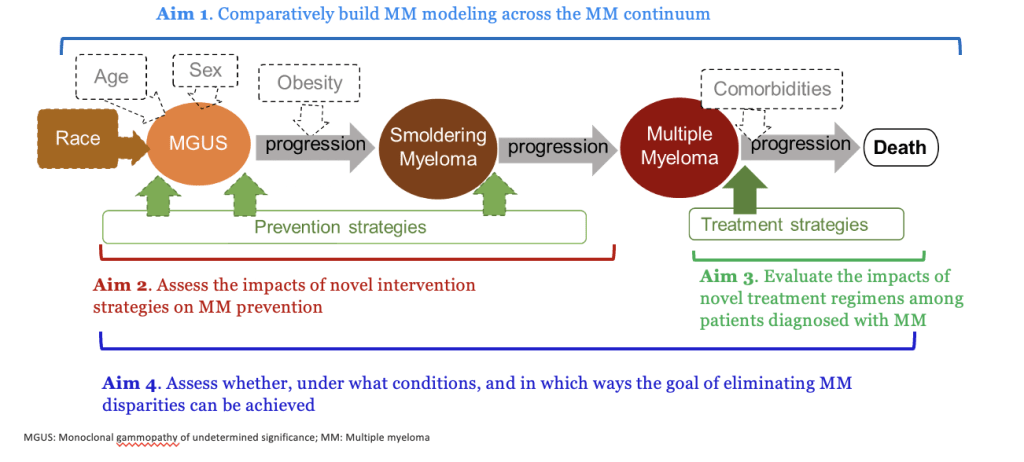Comparative modeling of multiple myeloma across myeloma control continuum

The long-term goal of this Incubator Program is to help inform setting policy goals for MM prevention and control and prioritizing intervention strategies with great value. To achieve this, we plan to model the natural disease history from the development of MGUS to myeloma, followed by survivorship. Using the developed, calibrated, and validated naturaldisease history model, we will then evaluate whether promising intervention strategies throughout the continuum of care will prevent the devastating disease and improve survival outcomes with great value.
We have 4 aims:
Aim 1. Leveraging on our MM research and modeling expertise, we plan to comparatively build, calibrate, and validate evidence-based MM modeling across the MM care continuum. The modeling groups will construct evidence-based comparative modeling, like the six cancer sites covered in the CISNET.
Aim 2. Assess the impacts of novel intervention strategies on MM prevention in high-risk patients diagnosed with MGUS. Novel interventions based on existing evidence will be proposed, explored, assessed, and evaluated in terms of number of prevented cases, costs, and life years saved for high-risk MGUS patients.
Aim 3. Evaluate the impacts of novel treatment regimens on survival outcomes among patients diagnosed with MM. Novel treatment regimens will be explored, discussed, and evaluated for MM patients. Moreover, guideline recommended therapies will be assessed to inform clinical practice for value-based treatments.
Aim 4. Assess whether, under what conditions, and in which ways the goal of eliminating myeloma disparities can be achieved through the proposed novel intervention strategies and treatment regimens. This is a counterfactual aim. Through this aim we will identify the optimal strategy to eliminate myeloma health disparities.